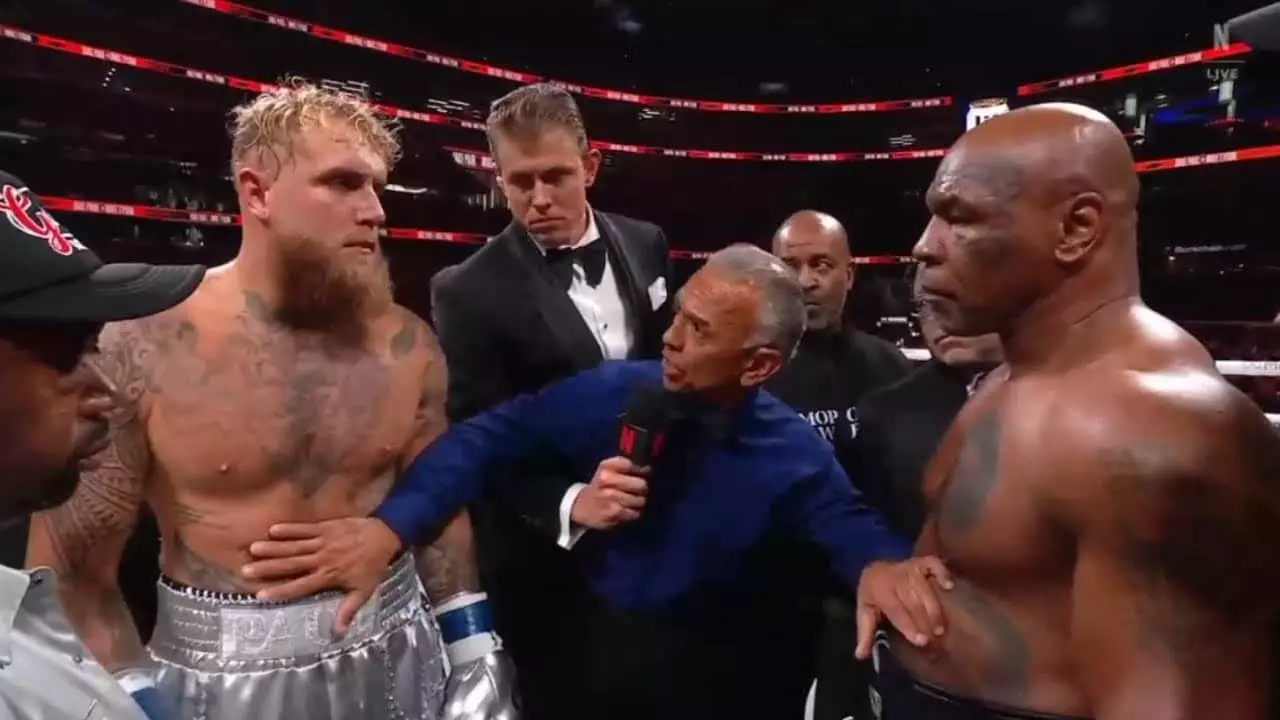Boxing has long been synonymous with its star athletes. Iconic figures like Muhammad Ali, Mike Tyson, and Floyd Mayweather have not only captivated fans with their prowess in the ring but have also emerged as cultural figures whose influence extends far beyond the confines of sports. However, in today’s fast-paced and multifaceted entertainment industry, boxing faces unprecedented challenges. The question arises: how can boxing’s stars reclaim their dominance and ensure the sport’s continued relevance amid a myriad of alternatives?
The Challenges of Modern Engagement
In an era defined by content saturation, fans are presented with an overwhelming array of choices ranging from traditional sports leagues like the NFL and NBA to dynamic online platforms hosting viral content. As a result, boxing is no longer just competing against other combat sports, such as MMA, but against every conceivable form of entertainment vying for fans’ attention. The UFC has managed to position itself advantageously by consistently hosting well-promoted events featuring their top fighters year-round. This strategy allows for sustained visibility and engagement that boxing currently lacks.
The disparity becomes evident when comparing activity levels; boxing’s biggest stars often fight once or twice a year, leaving fans wanting more during lengthy absent stretches. The UFC, on the other hand, has built a robust narrative around their fighters, ensuring that stars like Conor McGregor are continuously in the public eye, whether through live bouts or engaging media stories. In contrast, boxing’s top athletes frequently miss out on similar promotional opportunities, causing a disconnect with fans who may only tune in sporadically.
High-profile bouts in boxing can generate significant buzz, as evidenced by events like Gervonta Davis versus Ryan Garcia and Terence Crawford’s victory over Errol Spence. These matches highlight the potential for boxing to create electrifying moments that resonate with audiences, sparking excitement and enthusiasm for the sport. Yet, the unfortunate reality is that such events are not regular occurrences, leading to the perception of boxing stars as seasonal attractions.
Canelo Alvarez stands as a notable exception due to his relatively rigorous fighting schedule, yet even he encounters challenges in securing opponents that sufficiently intrigue both casual and hardcore boxing fans. As a result, the sport risks alienating its audience, leaving them uninspired and, worse, disinterested.
Jake Paul, often viewed as a controversial figure in boxing, presents a unique case. His ability to captivate media attention and draw in a younger audience through frequent and high-profile bouts illustrates a critical lesson for established boxers. While the skill level may vary, Paul’s unscripted self-promotion and consistent activity keep him relevant in the conversation surrounding boxing.
By contrast, traditional boxing stars risk becoming irrelevant without developing a strong media presence. It becomes imperative for elite athletes like Crawford and Davis to leverage social media platforms, build engaging narratives, and actively engage with their fan base to maintain visibility and relevance outside the ring.
To revitalize the sport and secure its future, boxing must prioritize increased activity from its top fighters and focus on matchups that are compelling rather than simply financially lucrative. This involves promoting fights that audiences wish to see more promptly, thereby eliminating the inertia associated with marinating bouts in the name of profitability.
For instance, the long-awaited showdown between Crawford and Spence created much buzz, but it could have arrived sooner, preserving fan interest that might have waned in the interim. The prospect of superfights like Davis versus Shakur Stevenson should not be delayed, as timely execution could maintain momentum within the sport, capturing the interest of fans who may otherwise seek entertainment elsewhere.
Moreover, regular appearances from top-tier fighters can create opportunities for rising talent to shine, fostering a holistic ecosystem for boxing that keeps fans consistently engaged.
Boxing is equipped with the essential elements for success: gifted athletes, compelling storylines, and an illustrious history. However, to adapt and thrive within the contemporary sports landscape, its stars must adopt a proactive role, engaging fans through not only their fights but through their personas.
Fighters like Gervonta Davis, Terence Crawford, and Canelo Alvarez must emerge as not just champions in the ring, but as influencers who resonate culturally. With a commitment to more frequent fights, strategic matchmaking, and innovative promotion, boxing has the potential not just to persist but to flourish amidst growing competition—competing not just for titles but for the hearts and minds of fans around the world.


Leave a Reply